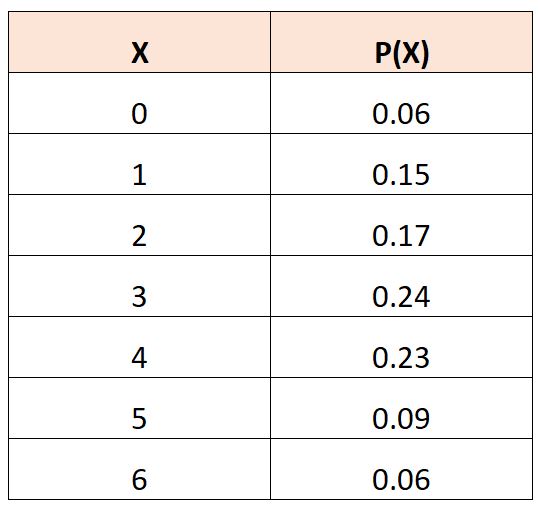For a random variable, denoted as X, you can use the following formula to calculate the expected value of X3:
E(X3) = Σx3 * p(x)
where:
- Σ: A symbol that means “summation”
- x: The value of the random variable
- p(x):The probability that the random variable takes on a given value
The following example shows how to use this formula in practice.
Example: Calculating Expected Value of X3
Suppose we have the following probability distribution table that describes the probability that some random variable, X, takes on various values:

To calculate the expected value of X3, we can use the following formula:
E(X3) = Σx3 * p(x)
E(X3) = (0)3*.06 + (1)3*.15 + (2)3*.17 + (3)3*.24 + (4)3*.23 + (5)3*.09 + (6)3*.06
E(X3) = 0 + .15 + .1.36 + 6.48 + 14.72 + 11.25 + 12.96
E(X3) = 45.596
The expected value of X3 is 45.596.
Note that this random variable is a discrete random variable, which means it can only take on a finite number of values.
If X is a continuous random variable, we must use the following formula to calculate the expected value of X3:
E(X3) = ∫ x3f(x)dx
where:
- ∫ : A symbol that means “integration”
- f(x): The continuous pdf for the random variable X
When calculating the expected value of X3 for a continuous random variable, we typically use statistical software since this computation can be more difficult to perform by hand.
Additional Resources
The following tutorials explain how to perform other common tasks in statistics:
How to Find the Mean of a Probability Distribution
How to Find the Standard Deviation of a Probability Distribution
How to Find the Variance of a Probability Distribution